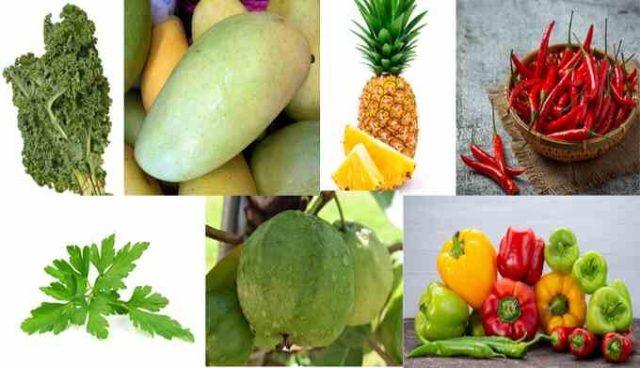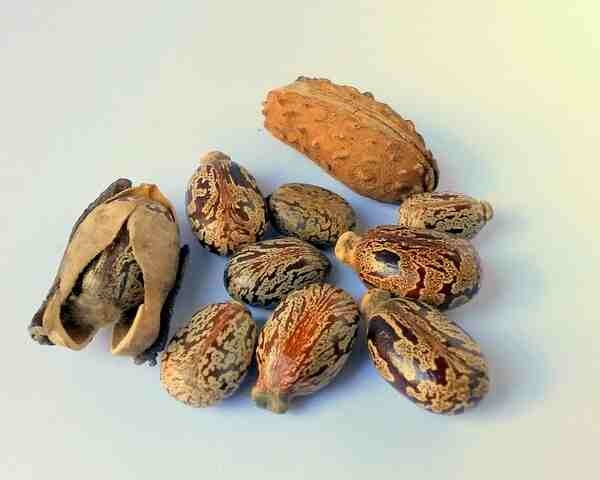
Caribbean Scotch Bonnet is so ‘hot”
Health Benefits of Scotch Bonnet Pepper and Side Effect
Scotch Bonnet peppers are one of the most popular spicy peppers in the world, and they’re frequently used in African, Caribbean, Arab, and Mexican recipes. This low-calorie pepper grows all year in tropical locations and is utilized in a variety of African recipes.
They have a strong flavor and are often used as a condiment. They can be used to spice up a meal or as a vital ingredient. Chili peppers from this kind are recognized for their heat, but they also offer a number of additional benefits.
Even though we now refrigerate food, adding spicy peppers, hot sauces, and hot powders to food continues to protect us from food poisoning.
Information About Scotch Bonnet Pepper
Scotch bonnets earned their name from the fact that they resemble a Scottish man’s cap in looks.
The fruit pods are often in the form of a hat. Scotch bonnet peppers are commonly referred to as ‘Scotchy’ in Jamaica.
If you come into contact with scotch bonnet pepper; endeavor to wash your hands with soap and water to avoid setting other parts of the body with the heat emanating from the pepper. A substance called capsaicin is responsible for its heat.
What are Scotch Bonnet Peppers?
Pepper comes in different varieties all over the world. Scotch Bonnet Peppers are one of the hottest peppers on the planet.
Scotch Bonnet is a chili pepper cultivar that is also called Bonney peppers, Ata Rodo, Caribbean red peppers, flower pepper, or Fresh Pepper. It has a distinct hot flavor and a fruity taste.
It is commonly used in Nigerian dishes to add spice to a variety of foods. As a result, if you dislike peppery spicy foods, it’s better to avoid it or use this ingredient minimally.
However, you may reduce the heat of a Scotch bonnet or any other pepper by removing the seeds which is where the majority of the heat is housed.
Scotch bonnet pepper has four colors, red, green, orange, and yellow. The yellow type popularly called (Ose Nsukka) is more peppery and has a distinct flavor from the red and green varieties. I enjoy the yellow pepper more in Oha soup and Nsala soups.
Scotch Bonnet Pepper Nutritional Values
Scotch bonnet peppers are high in phytochemicals, vitamins, and minerals among others.
They’re low in calories and fat, but high in fiber, Vitamin C, and Vitamin A, as well as Vitamin B6.
Copper and iron are present, as well as an antioxidant called Capsaicin, Carotenoid, and Flavonoids.
Health Benefits of Scotch Bonnet Peppers – What Are Their Benefits?
Promotes a Healthy Heart
It also helps the vascular system and protects against heart disease by decreasing blood serum cholesterol and lipid accumulation, reversing excessive blood clotting. It also helps blood flow through dilation of blood vessels.
Treatment Pain
Because of the presence of capsaicin, Scotch bonnet peppers can be used to treat a variety of pains, including arthritic pain, headaches, rheumatoid pain, and inflammatory heat. capsaicin acts as a pain reliever.
Improves Metabolism / Helps You Lose Weight
Spicy peppers increase metabolic rate by causing burning mechanisms in our bodies to produce heat.
This process consumes energy and, as a result, utilizes more calories. Moreover, eating spicy peppers at breakfast suppresses hunger for the remainder of the day, resulting in weight reduction.
It may even modify proteins in your body to help you lose weight.
Capsaicin has also been explored as a comprehensive weight-loss approach. It will target nerve fibers that convey information from the stomach to the brain and kill them selectively.
Fights Colds, Flu, and Fungal Infections
Hot peppers are high in beta carotene and antioxidants, which help to enhance your immune system and combat colds and the flu.
Nasal sprays containing capsaicin have been shown to relieve congestion in studies. When you eat spicy peppers, your body temperature rises, which activates your immune system to fight norovirus (cold) and flu viruses.
Scotch bonnet peppers can be used to make local therapies and soups that can help with chest congestion and sinusitis prevention. Pepper consumption reduces fungal infections, which helps to combat number of fungal types.
Prevents Bad Breath
Eating hot pepper powder helps to keep your significant other attracted to you by disinfecting the air you breathe out and boosting the odor of your breath.
Treatment of Asthma
Scotch bonnet pepper roots can be used to make local remedies for treating asthma.
Reduces the risk of cancer
Capsaicin, an anti-inflammatory and antioxidant compound found in pepper flesh is being researched as a cancer fighter. It slows the development of prostate cancer cells while protecting healthy cells. Peppers have also been found to help prevent cancers of the breast, bladder, and pancreatic when consumed in reasonable quantities.
Uses for Ornamental Purposes
Peppers may be used as a decorative and attractive plant because of their bright colors, particularly when ripe.
Colouring Agent
Peppers with strong colors, such as paprika, purple pepper, red long peppers, and cayenne peppers, can be used to color meals.
Spicing and Flavoring
because of its vibrant color and fragrant scent, Scotch bonnets are used to flavor and spice a variety of African, Asian, American, and Australian dishes, such as Nigerian pepper soup, pepper sauce, and hot sauces.
How to cook with these peppers?
How frequently should we add pepper spices to our diet? Do we do it every day? Occasionally? Rare! No? I just wanted an overview of the experiences I have enjoyed with chilli peppers over the last decade before I start to share the most important information you must understand about this special vegetable. Personally, I love peppery dishes like Nigerian Jollof Rice, Pepper Soup, or Pepper stew, and I don’t remember cooking and eating anything homemade if I don’t use pepper. Most of my family enjoys peppery foods and that’s not an exaggeration.
Use little quantity for less peppery food and more peppers for a hot spicy recipe
Are Scotch Bonnet Peppers Same as Habanero Peppers?
No, however, they are quite similar since they are both members of the Solanaceae family, sometimes known as the nightshade family. As a result, they are Capsicum chinense cousins and variations.
How Do You Store Scotch Bonnet Peppers?
They may be stored in the refrigerator or freezer in a resealable zipper bag. Freezing them, on the other hand, will allow you to keep them for much longer than 2-3 weeks.
Where can I buy Scotch Bonnet Peppers near me?
It is available in all Nigerian marketplaces, shopping mall fruit and vegetable section at reasonable pricing. Chili peppers or Atarodo in Yoruba, Ose in Igbo, or Atarugu in Hausa are available within Nigerian marketplaces.
Side Effects of Scotch Bonnet Peppers?
Chili peppers are unsuitable for everyone; when we consume particularly spicy peppers, the brain gets “pain” signals, which can cause nausea, vomiting, and upset stomach.
They also cause a burning feeling, and your stomach responds as if you’ve eaten something dangerous.
Caution
Before making any health-related decisions, speak with your doctor.


